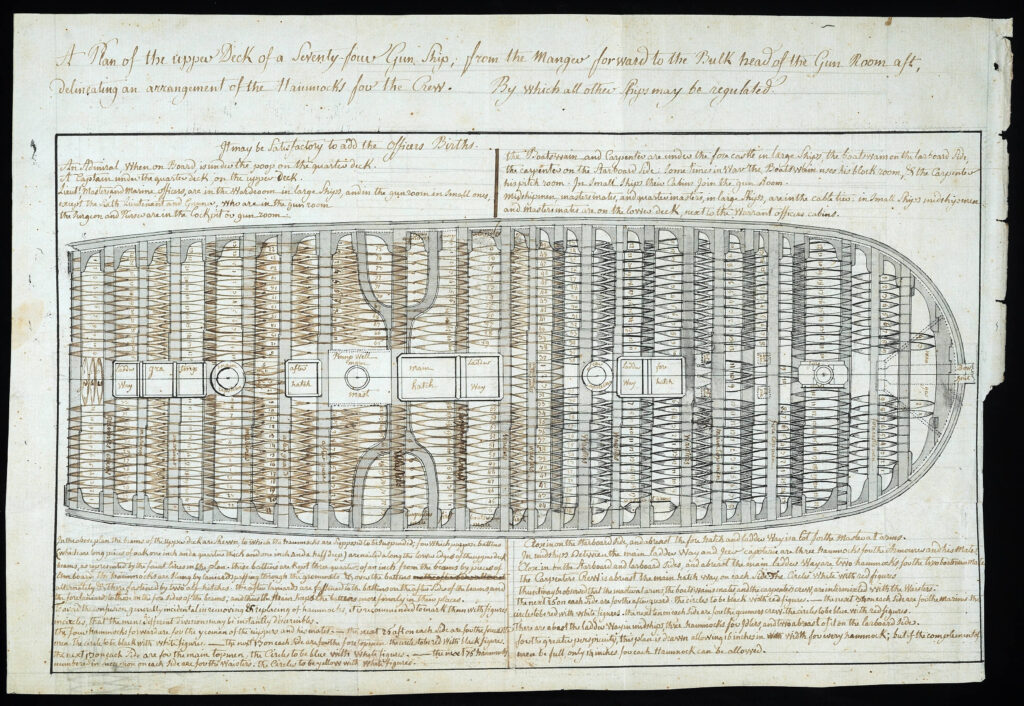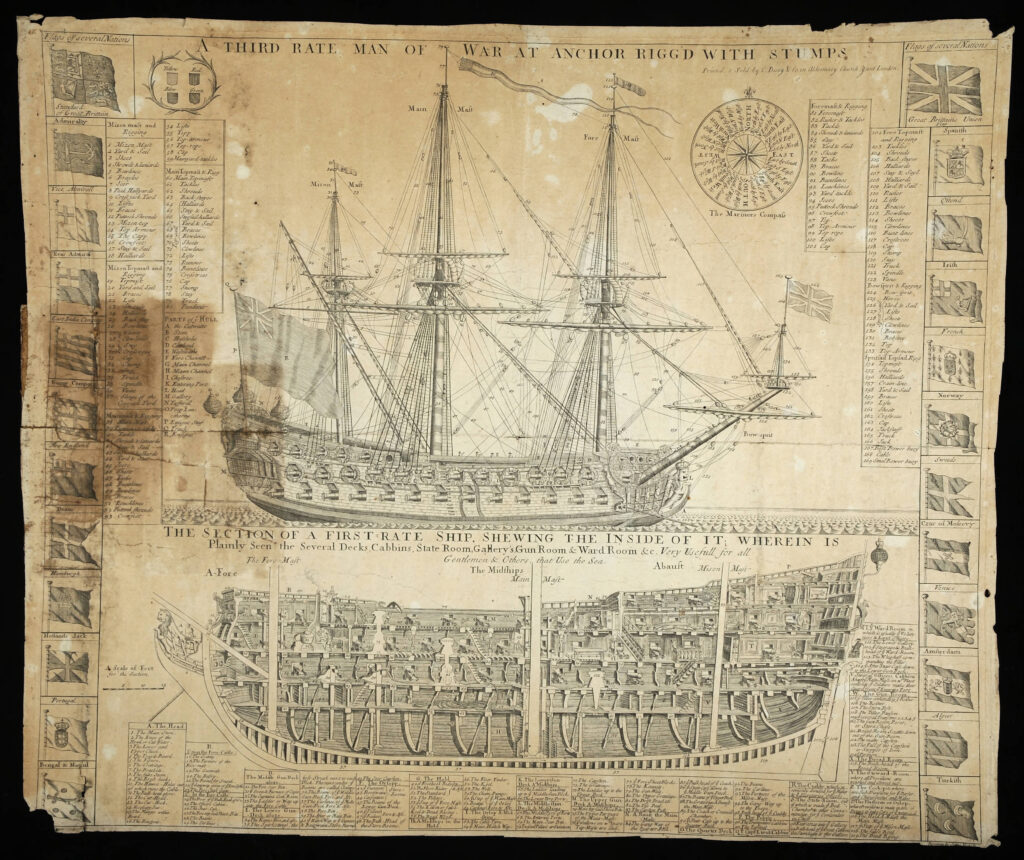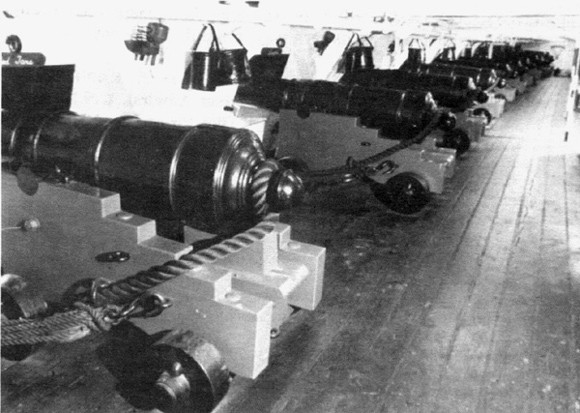Learning Goals
Students will learn some aspects of daily life at sea for sailors in the eighteenth century and will make connections to possible ways these conditions influenced military strategy during the Revolutionary War.
Essential Questions
1. What were the sleeping arrangements for sailors on eighteenth century naval vessels?
2. How did James Lind use the scientific method to identify an effective treatment for scurvy?
3. How may conditions aboard naval vessels in the eighteenth century influence military strategy
during the Revolutionary War?
Historical Context
An eighteenth century warship was a society in miniature, with its own language, norms, customs and superstitions. Sailors described it as their “wooden world.” A first-rate ship of the line carried a crew of about one thousand men, each with his own task and place in an elaborate social hierarchy extending from the captain to the common sailor.
Sailors often went for months without setting foot on land. Pay was irregular. Conditions on board ship were crowded and unsanitary. The master-at-arms assigned sailors a time to eat their meals and a location to hang their hammocks for sleeping. Sleeping arrangements were cramped, ordered by hierarchy and usually located on the cannon decks. Stored food was monotonous and deficient in vital nutrients, though not as bad as popular history often portrays it. It was probably more plentiful than the food most manual laborers consumed on land. Fresh water and rum were always rationed and usually in short supply. Death from disease and injury was a constant companion. Medical care was rudimentary, and naval surgeons could do little to rescue sailors from the ravages of dysentery, smallpox and scurvy.
Life at sea involved long stretches of boredom punctuated by the terrors of storm and battle. A wooden warship required many more men to work the guns than it did to manage the sails, so idleness was a constant problem. Sailors were kept busy maintaining the ship. Severe discipline discouraged mischief and encouraged the strict obedience essential to success in battle.
Life Aboard Eighteenth Century Ships
Examine the images below (click for larger view in gallery) and think about what they show about life at sea.
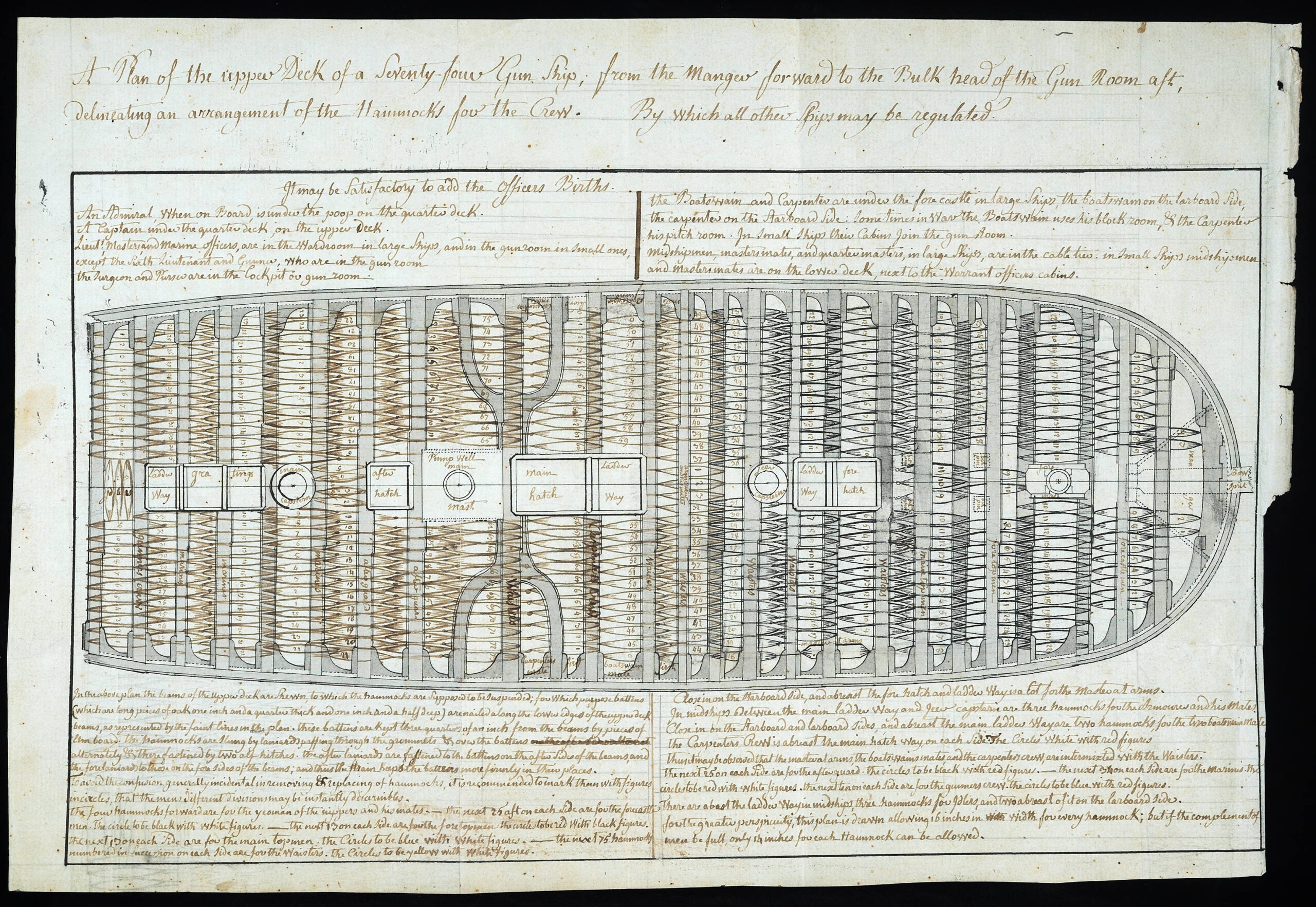
1. A plan of the upper deck of a seventy-four gun ship: from the manger forward to the bulk head of the gun room aft, delineating arrangement of the hammocks for the crew : by which all other ships may be regulated
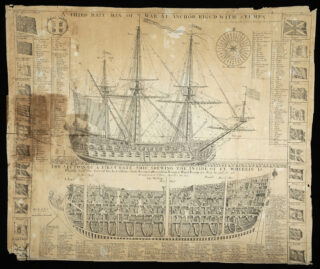
2. The section of a first rate ship shewing the inside of it : where in is plainly seem the several decks, cabbins, state room, gallery’s, gun room, & ward room, &c.
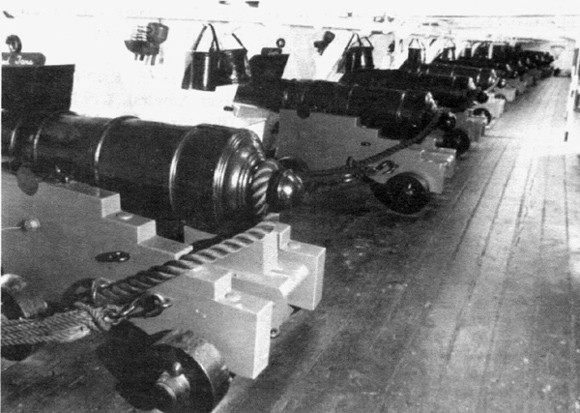
3. Photograph of the gun deck of the U.S.S. Constitution. Although built after the American Revolution, cannon crews on Revolutionary War-era ships would have found a similar layout as well as crowded conditions.
After analyzing the period images, read the paragraph below about sleeping arrangements on eighteenth century naval vessels.
Sailors endured crowded sleeping conditions on eighteenth century naval vessels. The master-at-arms or another person of rank assigned sailors a number indicating where to hang their hammock during their designated hours for sleeping. Sleeping locations were assigned according to rank. Each man had his own hammock, which he stowed during the day. The hammocks were not flat like many modern hammocks. These wrapped around the sailor similar to a cocoon, which prevented him from being tossed out in rough waters while he slept. If he died at sea it usually served as his burial shroud.
Write
In 3-5 sentences, describe life aboard large naval vessels for sailors on eighteenth century naval vessels. Have students think specifically about what sleeping and eating conditions were like on ship.
Testing for Scurvy Treatments
I. BEGINNING THE MEDICAL TRIAL
Read the description of the medical trial published by James Lind in 1753 and respond to the questions.
1. On what date did James Lind’s medical trials begin to test treatments for scurvy?
2. How many patients did James Lind test?
3. What were the patients’ symptoms?
4. What was the common diet among the patients while under trial?
II. CHARTING THE MEDICAL TRIAL
Fill in the medical trial chart with information gathered from Lind’s description.
III. RESULTS OF THE MEDICAL TRIAL
Respond to these questions about the results of the trials.
1. Which of the tests yielded the best results?
2. How long did it take for a patient to be fit for duty while taking oranges and lemons?
3. Who started nursing the other sick patients toward the end of the trial?
4. Which test did Lind believe yielded the next best results?
5. How long did the trial last?
After reading Lind’s description, responding to questions and charting the trial, read the two paragraphs below about scurvy in the eighteenth century.
Scurvy, a wasting disease caused by vitamin C deficiency, was a scourge of eighteenth-century sailors. Without vitamin C, the human body cannot manufacture collagen: gums decay, sores erupt on the skin, old wounds open, and fever, neuropathy and death overtake the victim. Scurvy was common on ships more than a month or two at sea, by which time most fresh provisions were exhausted and sailors forced to subsist on salted meat, bread and beer.
The remedy remained a mystery until 1747, when Royal Navy physician James Lind (1716-1794) conducted the first recorded clinical trials. Trying to isolate an effective treatment from the many suggested, Lind treated one group of scurvy victims with cider, one with elixir of vitriol (sulfuric acid), one with barley water and spices, one with seawater and the last with two oranges and one lemon a day. The last group recovered. In 1753, Lind published his results in A Treatise on the Scurvy, recommending citrus juice as a preventive and treatment for scurvy. The distribution of lemon and lime juice in the Royal Navy spread slowly but was common by the middle of the 1790s. The French navy was much slower to adopt the practice. Scurvy plagued French sailors through the Napoleonic Wars.
Write
1. In 3-5 sentences, describe how James Lind used the scientific method to identify an effective treatment
for scurvy.
2. How could the medical knowledge Lind pioneered provide an advantage to the British over the French
navies?
Class Discussion (Assessment)
1. What are some aspects of a sailor’s life at sea?
2. How may conditions aboard naval vessels in the eighteenth century influence military strategy during the
Revolutionary War?
